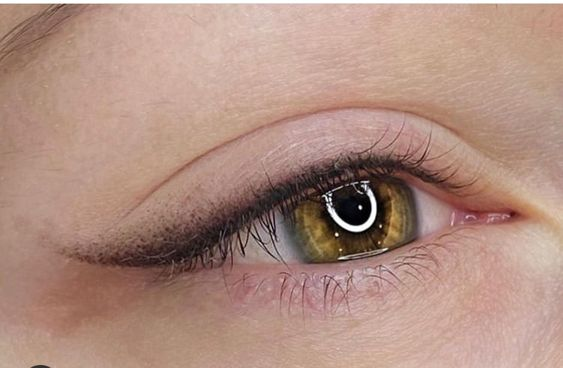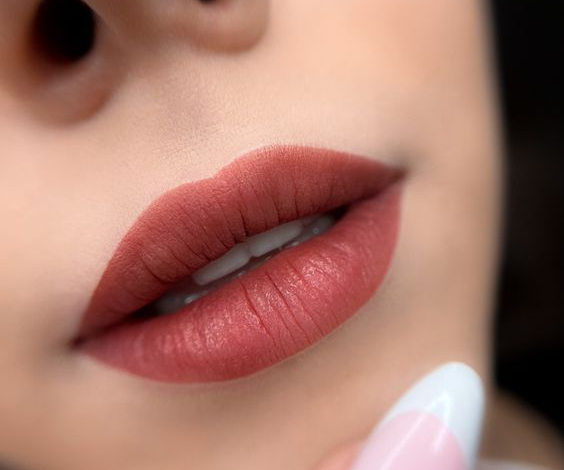
Comprehensive Guide to Tattoo Removal: Processes, Clinics & Aftercare
Embarking on a journey to erase a tattoo in the bustling heart of Australia’s cultural capital requires precise knowledge, especially when it comes to laser tattoo removal Melbourne. Whether your ink no longer aligns with the person you’ve become, or the piece failed to match your expectations, pinpointing the ideal clinic for your needs is essential. As the field of laser tattoo removal advances, those in Melbourne now have access to state-of-the-art services that promise a cleaner slate. Nevertheless, with a myriad of establishments to choose from, diving into the Melbourne tattoo removal scene necessitates informed decisions to ensure both safety and excellence in results.

Understanding Tattoo Removal
The Tattoo Removal Process
A common misconception is that tattoo removal simply erases the ink from your skin. In reality, the process involves breaking down the tattoo pigment so that your body’s immune system can dispose of it. The most popular and effective method is laser tattoo removal, which targets the ink with bursts of high-intensity light that shatter the pigment, allowing your body to flush it away over several sessions.
There are other methods available such as dermabrasion, which sands away layers of skin, and surgical excision, which entails cutting out the tattooed skin and stitching the surrounding skin together. Each method has its own set of risks and effectiveness, and the best choice for you will depend on various factors including the tattoo’s size, location, and the complexities of its colors.
Factors Affecting Tattoo Removal Success
The success of tattoo removal can vary greatly and is influenced by several factors. Some tattoos with lighter inks can be removed more easily, while darker and more vibrant colors can be more resilient. The age of the tattoo also plays a role; newer tattoos can be more challenging to remove than older ones that have already faded to some extent. The location of the tattoo and your skin type can also impact the removal process, as can your overall health and lifestyle habits.
Tattoos located on more vascular areas such as the chest may fade more quickly than those on extremities like the hands and feet due to better blood circulation. Similarly, an individual’s immune system can affect how swiftly the body disposes of the ink particles after they’ve been broken down by the removal process. To understand these factors better, let’s discuss in a numbered list the major factors affecting tattoo removal success:
- Ink Color — Lighter colors such as yellow and green can be more challenging to remove than darker colors.
- Tattoo Age — Older tattoos generally fade faster during removal than newer, more vibrant tattoos.
- Skin Type — Certain skin types may experience more or less discoloration post-removal.
- Immune System — A robust immune system can clear ink particles faster, improving the results of the removal.
Choosing the Right Tattoo Removal Clinic
Credentials to Look For
When searching for a reputable clinic, there are certain credentials you should prioritize to ensure a safe and effective removal process. It’s crucial that the clinic is licensed, and the practitioners are certified to use laser removal equipment. Make sure to investigate the clinic’s reputation by reading reviews and testimonials, and don’t hesitate to ask for before-and-after photos of previous removals they’ve performed.
Another important aspect to consider is the clinic’s dedication to ongoing education in the field of tattoo removal. This ensures they stay up to date with the latest techniques and best practices. Below, find a table summarizing the key credentials to consider when choosing a tattoo removal clinic.
| Credential | Description | Why It Matters |
|---|---|---|
| Licensing | Official permission to operate a tattoo removal business. | Ensures the clinic adheres to health and safety regulations. |
| Practitioner Certification | Proof of expertise in operating removal equipment. | Indicates a specialist skill set for performing removal procedures safely. |
| Positive Reviews | Client feedback regarding their experiences. | Offers insight into the clinic’s success rate and customer service quality. |
| Before-and-After Photos | Evidence of the clinic’s previous work. | Provides a visual gauge of the results you can expect. |
| Ongoing Education | Continuous learning and improvement in tattoo removal techniques. | Ensures the clinic remains at the forefront of removal technology. |
Equipment and Technology
The technology used for tattoo removal plays a pivotal role in the outcome of the procedure. It is vital to choose a clinic that invests in modern laser equipment, as advancements in technology have significantly improved results and reduced the risk of side effects. The clinic should offer a range of lasers to target different ink colors and depths effectively.
Additionally, inquire about the pain management options they provide. Every client’s pain threshold is different, and a professional clinic will offer solutions to make the process as comfortable as possible. This may include cooling devices, topical anesthetics, or local anesthetics. Here’s a numbered list of pain management options to look for:
- Cooling Devices – Machines that cool the skin before, during, and after the laser treatment to minimize discomfort.
- Topical Anesthetics – Creams or gels applied to the skin to numb the area being treated.
- Local Anesthetics – Injections that numb the skin, offered by some clinics for a more pain-free experience.
Preparing for Your Tattoo Removal Appointment
Consultation – The First Step
Prior to any actual tattoo removal treatment, a consultation with the practitioner is necessary. This is a crucial step where you’ll discuss the history of your tattoo, any previous removal attempts, and your medical history. The practitioner will assess the tattoo and your skin to offer a tailored removal plan and give you an estimate of the number of sessions required.
A consultation is also the time to ask all of your questions regarding the procedure, risks, and expectations. It’s vital to feel comfortable with the practitioner and their approach. A good practitioner will be transparent, informative, and willing to address all your concerns.
After the consultation, you should have a good understanding of the removal process. Here are some critical questions to consider during your appointment:
- What type of laser will be used for my tattoo removal?
- How many sessions are estimated for the complete removal of my tattoo?
- What are the potential side effects or risks, and how are they managed?
- What pre- and post-treatment care do you recommend?
- What is the cost per session, and are there package deals available?
Before the Procedure: Tips & Recommendations
In the weeks leading up to your tattoo removal session, there are certain steps you can take to ensure the best outcome and minimize potential side effects. Avoiding sun exposure on the tattooed area can prevent skin sensitivity and potential complications during the treatment. If your skin happens to be sunburned, reschedule your appointment to avoid further damage.
It’s also advisable to stay hydrated and maintain a healthy lifestyle leading up to your procedure, as this can improve your immune system’s ability to clear out the broken-down ink particles. If you smoke, consider halting or reducing the habit, as smoking can inhibit the healing process and reduce the effectiveness of tattoo removal.
Prepare your skin by keeping it clean and free from lotions, perfumes, or makeup on the day of the session. Wearing comfortable clothing that allows easy access to the tattooed area can also make the experience smoother for both you and the practitioner.
Aftercare and Recovery
Following your tattoo removal session, proper aftercare is essential for healing and achieving the best results. You will be given specific instructions on how to care for the treated area, which usually includes keeping it clean, applying prescribed ointment, and covering it with a sterile bandage. The practitioner might also advise you to avoid certain activities, such as swimming or intense exercise, which could increase the risk of infection or impede the healing process.
To manage any discomfort, over-the-counter pain relievers may be recommended. Swelling and redness are normal, but if you experience any signs of infection or other unusual symptoms, contact your practitioner immediately. It’s also important to continue avoiding sun exposure on the treated area to prevent complications such as hyperpigmentation or hypopigmentation.
Healing from tattoo removal is a gradual process, and patience is key. While you may see some immediate fading, the full results of each session will become more apparent over time as your body disposes of the ink particles. Scheduling follow-up appointments as recommended by your practitioner will allow your skin to heal between sessions and increase the effectiveness of the removal.
Let’s touch on some specific ways you can help reduce discomfort and promote healing post-removal:
- Avoid picking or scratching at the treated area, as this can lead to scarring.
- Apply cold compresses if necessary to reduce swelling and discomfort.
- Elevate the treated area if it’s on a limb to minimize swelling in the first few days.

Conclusion: Making an Informed Choice
Embarking on the journey of tattoo removal is a significant decision that requires careful thought and planning. By understanding the process entails, researching potential clinics and their credentials thoroughly, preparing appropriately for appointments, and diligently following aftercare instructions, you’ll put yourself in the best position for a successful removal. Remember, the key to a smooth tattoo removal experience lies in making informed choices every step of the way.
FAQs
- Q1: How many sessions will it typically take to remove a tattoo completely?
- A1: The number of sessions required for complete tattoo removal varies greatly, averaging between 5 to 10 sessions, with sessions scheduled 6 to 8 weeks apart. Factors like ink color, tattoo age, size, and individual immune response play a role.
- Q2: Can tattoo removal completely erase a tattoo?
- A2: Modern tattoo removal technologies have advanced, but a complete erasure is not guaranteed. Certain ink colors and densities, and individual skin responses, may result in some ink remnants remaining post-removal.
- Q3: Is tattoo removal painful?
- A3: Tattoo removal can be uncomfortable. The sensation is often likened to a rubber band snapping against the skin. Clinics offer various pain management options to minimize discomfort during the procedure.
- Q4: Are there any risks associated with tattoo removal?
- A4: Possible risks include skin discoloration, scarring, and infection. Selecting a credible clinic, following aftercare instructions, and quick reporting of abnormal symptoms can mitigate these risks.
- Q5: Will my health insurance cover tattoo removal costs?
- A5: Health insurance plans usually do not cover tattoo removal as it is deemed a cosmetic procedure. Patients may need to cover costs out-of-pocket or explore financing options available through some clinics.


